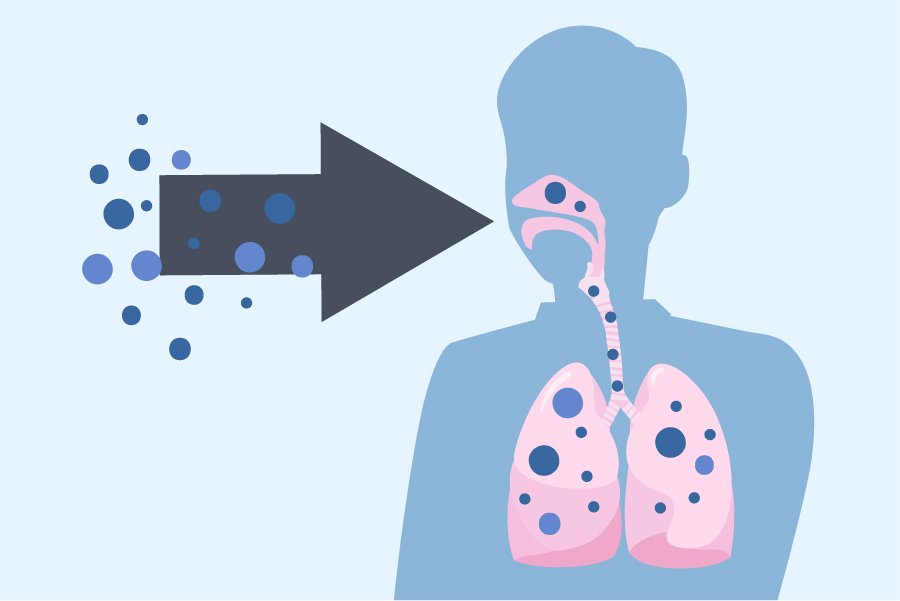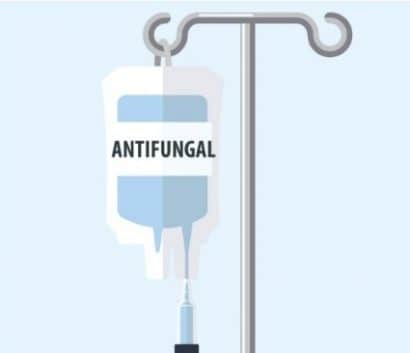Mucormycosis | Fungal Disease : Outbreak
17 May 2021 | Monday | News

Source : https://www.cdc.gov/
Healthcare providers who are concerned about an unusual number of new cases should contact their state or local public health agency.
Although most cases of mucormycosis are sporadic (not part of an outbreak), outbreaks of mucormycosis have occured. In healthcare settings, it can be difficult to determine whether mucormycosis is healthcare-associated or whether the infections were acquired somewhere else. Some examples of sources implicated in healthcare-associated mucormycosis outbreaks include adhesive bandages, wooden tongue depressors, hospital linens, negative pressure rooms, water leaks, poor air filtration, non-sterile medical devices, and building construction. 7-14 Community-onset outbreaks have been associated with trauma sustained during natural disasters. 15
How common is mucormycosis?
Mucormycosis is rare, but the exact number of cases is difficult to determine because no national surveillance exists in the United States. Population-based incidence estimates for mucormycosis were obtained from laboratory surveillance in the San Francisco Bay Area during 1992–1993 and suggested a yearly rate of 1.7 cases per 1 million population. 1
Prospective surveillance among 16,808 transplant recipients performed in 23 institutions during 2001–2006 found that mucormycosis was the third most common type of invasive fungal infection in stem cell transplant recipients and accounted for 8% of all invasive fungal infections (77 mucormycete cases occurred among 983 stem cell transplant recipients who developed any fungal infection). 2,3 Among solid organ transplant recipients, mucormycosis accounted for 2% of all invasive fungal infections (28 mucormycete cases occurred among 1,208 solid organ transplant recipients who developed any fungal infection). 3,4 The number of cases varied widely across participating institutions.
Deaths due to mucormycosis
Mucormycosis is frequently a life-threatening infection. A review of published mucormycosis cases found an overall all-cause mortality rate of 54%. 8 The mortality rate varied depending on underlying patient condition, type of fungus, and body site affected (for example, the mortality rate was 46% among people with sinus infections, 76% for pulmonary infections, and 96% for disseminated mucormycosis). 8
Symptoms of Mucormycosis
The symptoms of mucormycosis depend on where in the body the fungus is growing. 1,4 Contact your healthcare provider if you have symptoms that you think are related to mucormycosis.
Symptoms of rhinocerebral (sinus and brain) mucormycosis include:
- One-sided facial swelling
- Headache
- Nasal or sinus congestion
- Black lesions on nasal bridge or upper inside of mouth that quickly become more severe
- Fever
Symptoms of pulmonary (lung) mucormycosis include:
- Fever
- Cough
- Chest pain
- Shortness of breath
Cutaneous (skin) mucormycosis can look like blisters or ulcers, and the infected area may turn black. Other symptoms include pain, warmth, excessive redness, or swelling around a wound.
Symptoms of gastrointestinal mucormycosis include:
- Abdominal pain
- Nausea and vomiting
- Gastrointestinal bleeding
Disseminated mucormycosis typically occurs in people who are already sick from other medical conditions, so it can be difficult to know which symptoms are related to mucormycosis. Patients with disseminated infection in the brain can develop mental status changes or coma.
People at Risk & Prevention
Who gets mucormycosis?
Mucormycosis is rare, but it’s more common among people who have health problems or take medicines that lower the body’s ability to fight germs and sickness. Certain groups of people are more likely to get mucormycosis, 1–3 including people with:
- Diabetes, especially with diabetic ketoacidosis
- Cancer
- Organ transplant
- Stem cell transplant
- Neutropenia pdf icon[PDF – 2 pages] (low number of white blood cells)
- Long-term corticosteroid use
- Injection drug use
- Too much iron in the body (iron overload or hemochromatosis)
- Skin injury due to surgery, burns, or wounds
- Prematurity and low birthweight (for neonatal gastrointestinal mucormycosis)
How does someone get mucormycosis?
People get mucormycosis through contact with fungal spores in the environment. For example, the lung or sinus forms of the infection can occur after someone inhales the spores from the air. A skin infection can occur after the fungus enters the skin through a scrape, burn, or other type of skin injury.
Is mucormycosis contagious?
No. Mucormycosis can’t spread between people or between people and animals.
How can I lower the risk of mucormycosis?
It’s difficult to avoid breathing in fungal spores because the fungi that cause mucormycosis are common in the environment. There is no vaccine to prevent mucormycosis. For people who have weakened immune systems, there may be some ways to lower the chances of developing mucormycosis.
- Protect yourself from the environment. 4,5 It’s important to note that although these actions are recommended, they haven’t been proven to prevent mucormycosis.
- Try to avoid areas with a lot of dust like construction or excavation sites. If you can’t avoid these areas, wear an N95 respirator (a type of face mask) while you’re there. Click here for more information about respirators.
- Avoid direct contact with water-damaged buildings and flood water after hurricanes and natural disasters. 6
- Avoid activities that involve close contact to soil or dust, such as yard work or gardening. If this isn’t possible,
- Wear shoes, long pants, and a long-sleeved shirt when doing outdoor activities such as gardening, yard work, or visiting wooded areas.
- Wear gloves when handling materials such as soil, moss, or manure.
- To reduce the chances of developing a skin infection, clean skin injuries well with soap and water, especially if they have been exposed to soil or dust.
- Antifungal medication. If you are at high risk for developing mucormycosis (for example, if you’ve had an organ transplant or a stem cell transplant), your healthcare provider may prescribe medication to prevent mucormycosis and other mold infections. 7,8 Doctors and scientists are still learning about which transplant patients are at highest risk and how to best prevent fungal infections.
Diagnosis and testing for Mucormycosis
How is mucormycosis diagnosed?
Healthcare providers consider your medical history, symptoms, physical examinations, and laboratory tests when diagnosing mucormycosis. Healthcare providers who suspect that you have mucormycosis in your lungs or sinuses might collect a sample of fluid from your respiratory system to send to a laboratory. Your healthcare provider may perform a tissue biopsy, in which a small sample of affected tissue is analyzed in a laboratory for evidence of mucormycosis under a microscope or in a fungal culture. You may also need imaging tests such as a CT scan of your lungs, sinuses, or other parts of your body, depending on the location of the suspected infection.
Treatment for Mucormycosis
How is mucormycosis treated?

Mucormycosis is a serious infection and needs to be treated with prescription antifungal medicine, usually amphotericin B, posaconazole, or isavuconazole. These medicines are given through a vein (amphotericin B, posaconazole, isavuconazole) or by mouth (posaconazole, isavuconazole). Other medicines, including fluconazole, voriconazole, and echinocandins, do not work against fungi that cause mucormycosis. Often, mucormycosis requires surgery to cut away the infected tissue.
Most Read
- The New AI Gold Rush: Western Pharma’s Billion-Dollar Bet on Chinese Biotech
- Top 25 Biotech & Biopharma Leaders in Sustainable Innovation, 2025
- China’s Biopharma Dealmaking Surges in H1 2025, Driven by Record Licensing and Oncology Focus
- Chikungunya in China: How a “Forgotten” Arbovirus Found the Perfect Storm
- How Innovation Gaps in Biopharma Raise New Safety Concerns
- Smart Implants and the Future of Musculoskeletal Injury Treatment
- How Ethical Gaps in Psychiatry Could Undermine Biopharma Progress
- The Evolving Landscape of Women’s Health Innovation in the Asia-Pacific
- Using NLP-Driven Decision Support in Emergency Health Assistance
- Taiwan Steps Into the Global Spotlight With a New Cancer Therapy
- The Role of Unique Device Identification (UDI) in Tracing Medical Device Safety
- The Importance of a Patient’s Mental Health During Clinical Trials
Bio Jobs
- The State of Biotech and Life Science Jobs in Asia Pacific – 2025
- Avantor’s New CEO Ligner Aims to Unlock Global Potential and Deliver Shareholder Value
- AstraZeneca Commits $50 Billion to U.S. Expansion by 2030 in Biggest-Ever Global Investment
- Thermo Fisher, SAMRC, and South Africa’s Department of Science and Innovation Launch CATIR to Nurture Next-Gen Scientists
- Cube Biotech Appoints Former Sartorius CEO Dr. Joachim Kreuzburg to Board of Directors
- FDA’s AI Transition Marks a Turning Point in Drug Review: Industry Faces Pressure to Adapt Amid 20% Workforce Cut
- WuXi XDC Completes Mechanical Build of Singapore Bioconjugate Manufacturing Hub
News
Editor Picks











